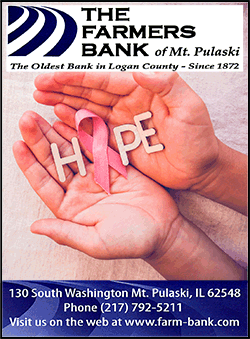How a small aluminum maker won U.S. trade protection
 Send a link to a friend
Send a link to a friend
 [October 18, 2019] By
Timothy Aeppel [October 18, 2019] By
Timothy Aeppel
HAWESVILLE, Ky. (Reuters) - When Donald
Trump won the White House, the sprawling aluminum smelter that hugs the
Ohio River here was operating at less than half its capacity, and most
of its skeleton crew of 270 remaining workers were fearful about their
future.
But Trump's tariffs have saved it, at least for now.
How a tiny industry - only 4,000 U.S. workers are directly involved in
making primary aluminum currently - won protection is a testament to
savvy lobbying, and one firm’s ability to get the Trump administration
to view it as a sector that would soon be gone without a government
intervention.
Century Aluminum Co <CENX.O>, which operates the Hawesville smelter and
ranks as the second-largest aluminum maker in the United States,
spearheaded the fight. Almost everyone else that touches the metal, from
the industry’s main trade association and consuming businesses from beer
maker MillerCoors to Alcoa Corp <AA.N> - the country's largest aluminum
maker - were staunchly opposed to tariffs.
U.S. aluminum prices are based on a global benchmark—with a premium
added on in the US to cover transportation and insurance. Since last
year, the premium has included the 10% Trump tariff. Century and other
domestic producers don’t pay the tariff, but still charge the same
premium, giving them a pricing edge.

But what is good for Century hurts most other parts of the industry.
Automaker General Motors Co <GM.N> estimated metal tariffs would add $1
billion to its costs in 2019. Heavy equipment maker Deere & Co <DE.N>
laid off 163 workers in Illinois and Iowa as the trade war drove up its
costs and at the same time hurt demand for tractors from farmers facing
diminished exports.
The fight between Century and almost every other firm in the aluminum
industry underscores a divergence that has occurred over the last two
decades. Many sectors of the U.S. aluminum business are thriving,
including processors who take raw aluminum and shape it into parts for
everything from airplanes to washing machines.
But makers of primary metal - its most basic form - have struggled.
The United States was once the world’s biggest producer of primary
aluminum. But by the time Trump took office, production had dwindled to
the level last seen in 1951 and capacity utilization, a gauge of
industry health, stood at just 37%. There were only five operating
primary aluminum smelters left, down from 23 in 2001.
What hobbled the business was a combination of energy prices, new
technology and globalization.
The drastically diminished U.S. footprint of primary aluminum helps
explain how the industry was able to make its case for protection, say
industry leaders, trade attorneys who fought for the tariffs, and
analysts who track the business.
Century, based in Chicago, began its fight in 2015 when it hired the
Washington law firm Wiley Rein LLP to help it press for protection. The
company had already announced plans to shutter the Hawesville plant
entirely, but opted instead to cut output to a fraction of its potential
as it waited to see how its case would play out, company executives told
Reuters.
The Obama administration filed a case with the World Trade Organization
during its last week in office, accusing China of unfairly subsidizing
its aluminum industry and harming domestic producers like Century. But
by then, a new wind of protection was blowing in Washington, and Century
saw the chance to tie its case closely to other basic industries seeking
tariffs, particularly steel.
Century’s lobbyists emphasized that unlike steel, which still produces
about 80% of U.S. needs at domestic plants, primary aluminum smelters
were on the brink of disappearing entirely. They found a receptive
audience at the Commerce Department, said Jesse Gary, Century’s general
counsel.
[to top of second column] |

Metal worker Andy Mattingly operates a siphoning crucible in the pot
room at Century Aluminum Company in Hawesville, Kentucky, U.S. May
14, 2019. Picture taken May 14, 2019. REUTERS/Bryan Woolston

Century also emphasized its unique role as the only U.S. operation that can make
metal needed for military equipment like advanced armor used to shield Humvees
and other military vehicles. “We’re the only volume producer of high purity
aluminum in the Western Hemisphere and among NATO allies,” said Gary, adding
that other main sources are China, Russia and the Middle East.
A spokesman for the Commerce Department confirmed that steel was a far bigger
target for their investigation into the case for tariffs on imported metals.
“But in terms of fragility of the industry, relatively speaking, aluminum was in
a worse position than steel,” said the spokesman, given the low capacity
utilization.
Industry giant Alcoa has argued that tariffs are the wrong way to address the
problem facing domestic smelters, which is low global prices of primary aluminum
caused by massive overproduction by China. The company has acknowledged tariffs
have helped its remaining U.S. smelters. Speaking to investors in April, Alcoa
CEO Roy Harvey said “tariffs have not solved the industry’s challenges, which
stem from high subsidized smelting capacity in China that has resulted in
surplus production.”
Meanwhile, Century’s Hawesville plant has become a poster child for tariffs.
After the tariffs were announced last year, the company said it would spend $150
million modernizing and reopening parts of the plant, moves that will eventually
lead to a doubling of the workforce to over 600.
Commerce Secretary Wilbur Ross famously downplayed concerns about metal tariffs
hurting consumers by going on CNBC holding a can of Campbell’s soup and saying
the tax would barely register in the cost of such goods. Ross last year attended
a ribbon-cutting at the gritty, smoke-filled Hawesville plant, where he
reassured workers that the protection would not be fleeting.
Tariffs are a frequent topic of conversation here for workers on the factory
floor, where work is underway to restart production lines. Greg Lester, who came
out of retirement last year to help train new workers being hired at the plant,
said he considers it almost a miracle that this mill did not die like all the
others he has worked for.

Lester notes that he spent much of his four-decade career helping U.S. companies
build smelters in other countries, while smelters back home fell like dominos.
“I’ve been in West Africa, I’ve taught Russians how to make super-pure
aluminum,” said Lester. “The only place that didn’t seem to want smelters was
the U.S.”
One place where the tariffs are viewed a bit more skeptically is the storefront
near Hawesville occupied by United Steelworkers local 9423, which represents
workers at the plant.
Andy Meserve, president of the union, said workers have welcomed the investments
and new jobs. They recognize that tariffs could hurt other parts of the aluminum
industry.
"But it was great for Hawesville," he said.
(Reporting by Timothy Aeppel; editing by Simon Webb and Edward Tobin)
[© 2019 Thomson Reuters. All rights
reserved.] Copyright 2019 Reuters. All rights reserved. This material may not be published,
broadcast, rewritten or redistributed.
Thompson Reuters is solely responsible for this content. |